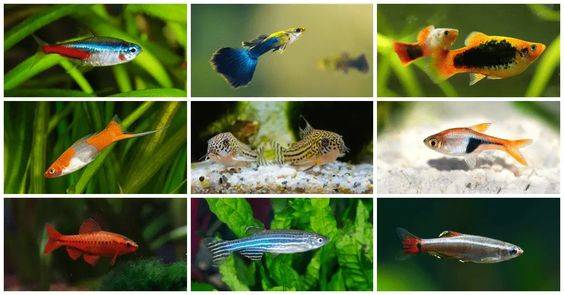Setting up a freshwater fish tank is an exciting venture, whether you’re a seasoned aquarist or a beginner. Not only does it add aesthetic appeal to your space, but it also offers a glimpse into the mesmerizing underwater world. However, to ensure the health and happiness of your aquatic inhabitants, proper setup, maintenance, and care are crucial. In this comprehensive guide, we’ll walk you through the steps to create and maintain a thriving freshwater fish tank.
Planning Your Freshwater Fish Tank
Before diving into the setup process, it’s essential to plan meticulously. Consider factors such as tank size, location, and the types of fish you want to keep. Research different species to ensure compatibility and optimal conditions. Additionally, decide whether you want a community tank with various fish species or a specialized tank focusing on specific breeds.
Essential Equipment for Your Freshwater Fish Tank
To create a conducive environment for your fish, you’ll need the right equipment. This includes:
- Aquarium Tank: Choose a tank size suitable for the number and size of fish you plan to keep.
- Filtration System: Invest in a high-quality filtration system to maintain water quality and clarity.
- Heater: Most freshwater fish require stable water temperatures, so a heater is essential, especially if you live in a colder climate.
- Lighting: Opt for appropriate lighting to simulate natural day-night cycles and promote plant growth.
- Substrate: Select a substrate that suits your chosen fish species and allows for the growth of aquatic plants.
- Decorations: Enhance the aesthetic appeal of your tank with rocks, driftwood, and plants, providing hiding spots and territories for your fish.
Setting Up Your Freshwater Fish Tank
Now that you have the necessary equipment, it’s time to set up your tank:
- Rinse the tank and substrate thoroughly to remove any dust or debris.
- Place the substrate evenly at the bottom of the tank, creating a natural landscape.
- Install the filtration system, heater, and lighting according to the manufacturer’s instructions.
- Add decorations, creating a visually appealing environment for your fish.
- Fill the tank with dechlorinated water, ensuring the temperature matches the requirements of your chosen fish species.
- Cycle the tank to establish beneficial bacteria, which help maintain water quality and reduce ammonia and nitrite levels.
Choosing Fish for Your Freshwater Tank
Selecting the right fish is crucial for a harmonious tank environment. Consider factors such as:
- Size: Ensure the fish you choose are suitable for your tank size and won’t outgrow the space.
- Compatibility: Research the temperament and behavior of different fish species to prevent aggression and territorial disputes.
- Water Parameters: Choose fish that thrive in similar water conditions to minimize stress and health issues.
- Diet: Consider the dietary requirements of each fish species and ensure they can coexist peacefully during feeding times.
Maintaining Water Quality
Regular maintenance is essential for the health and longevity of your freshwater fish tank. Here are some key tasks:
- Monitor Water Parameters: Use test kits to check ammonia, nitrite, nitrate, pH, and temperature levels regularly.
- Perform Partial Water Changes: Replace 10-20% of the tank water every 1-2 weeks to remove waste and replenish essential nutrients.
- Clean the Tank: Regularly clean the glass, decorations, and substrate to remove algae and debris.
- Prune Plants: Trim overgrown aquatic plants to maintain a balanced ecosystem and prevent overcrowding.
- Maintain Equipment: Clean and inspect filtration systems, heaters, and lighting fixtures to ensure they function efficiently.
Common Freshwater Fish Tank Issues and Solutions
Despite your best efforts, you may encounter issues in your freshwater fish tank.
- Algae Overgrowth: Adjust lighting duration and intensity, reduce nutrient levels through water changes, and introduce algae-eating fish or invertebrates.
- Disease Outbreaks: Quarantine new fish before introducing them to the main tank, maintain optimal water parameters, and treat sick fish promptly with appropriate medication.
- Aggression and Compatibility Issues: Rearrange tank decorations to create new territories, separate aggressive fish, and research compatible tank mates for each species.
- Water Quality Fluctuations: Test water parameters regularly, maintain proper filtration and water flow, and address any source of contamination promptly.
- Overstocking: Avoid overcrowding the tank by adhering to recommended stocking levels based on fish size and species compatibility.
Inference
Creating and maintaining a freshwater fish tank requires dedication, patience, and attention to detail. By following the steps outlined in this guide, you can establish a thriving aquatic ecosystem that brings joy and tranquility to your home or office space. Remember to research each fish species’ specific requirements and provide a well-balanced environment to ensure the health and happiness of your aquatic companions. With proper care and maintenance, your freshwater fish tank will flourish for years to come.







